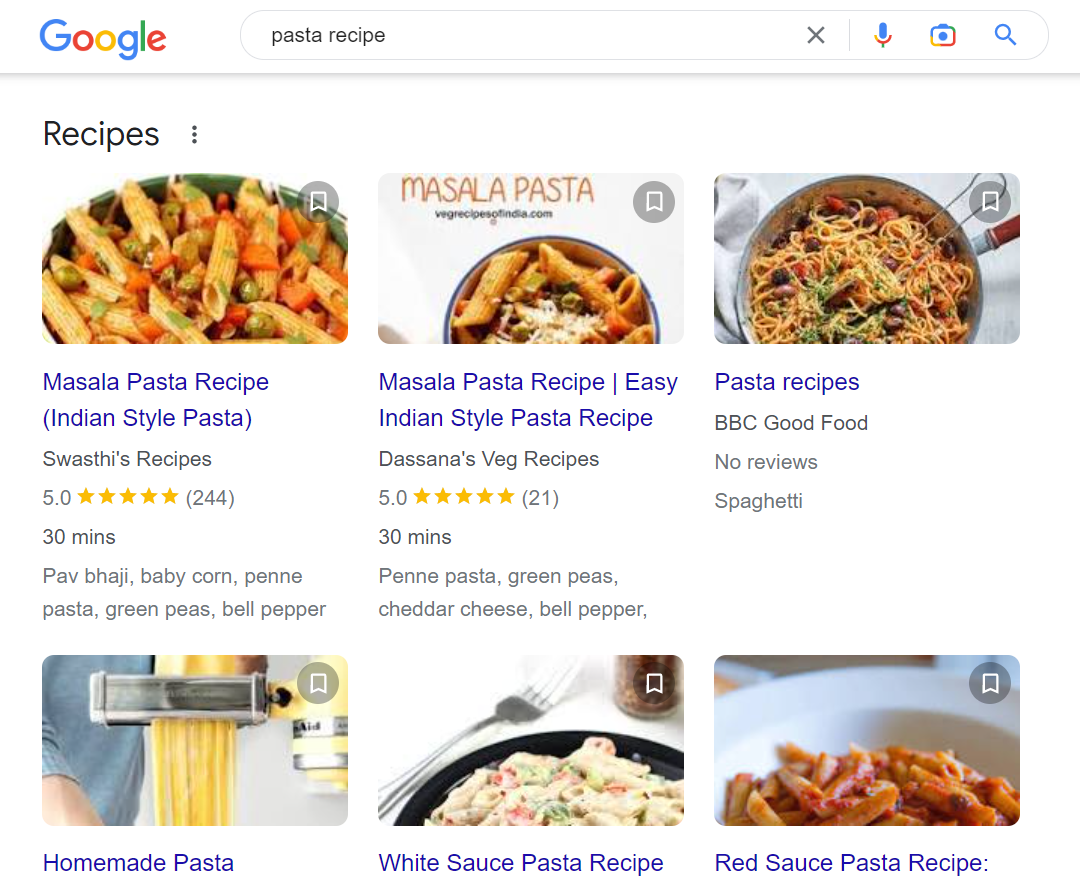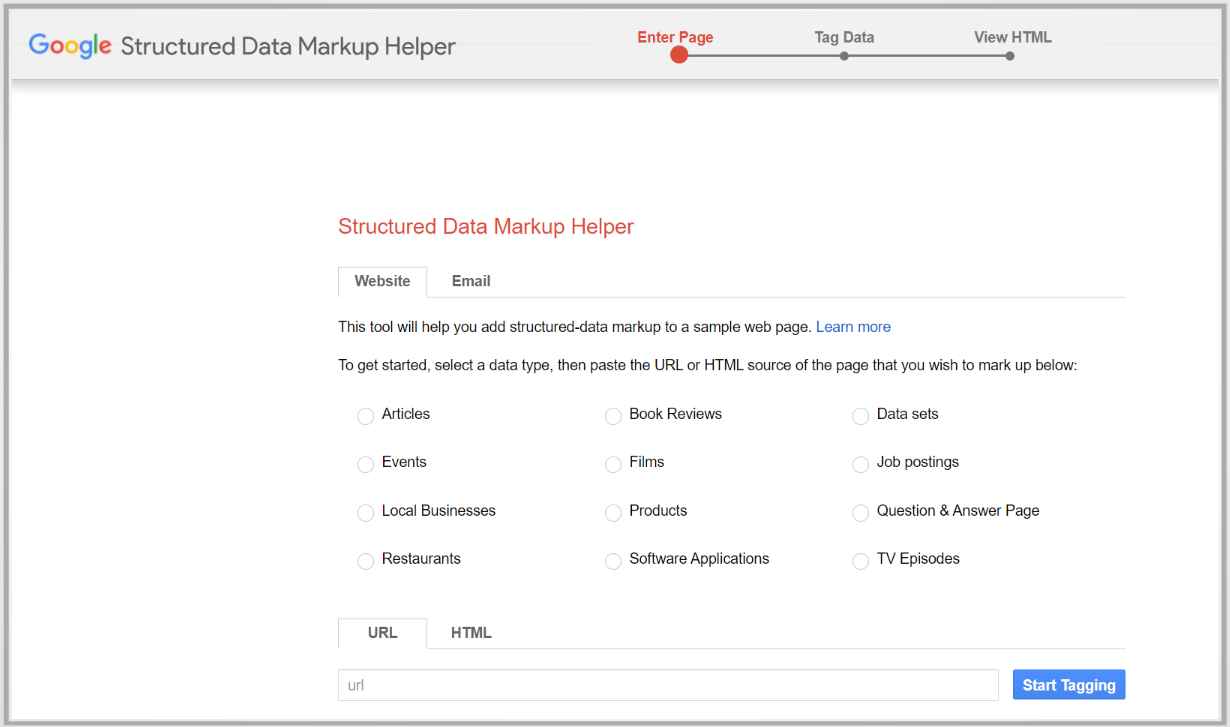Understanding structured data in SEO-The Ultimate Guide
Achieving a higher ranking on Google’s first SERP is excellent, but what if we tell you that you can even dominate the first SERP? Wonderful right? Structured data is the key. You can easily achieve a higher ranking on SERP and even appear in rich results by optimizing your structured data in SEO.
Wondering what structured data is and how you can implement it on your website? Continue reading the blog all the way to the end.
Structured data in SEO is a standardized format for providing information about a website’s content to search engines in a more organized and efficient way. It’s a vital component of search engine optimization that can help your website to rank higher in search engine results pages. In this write-up, we’ll explore what structured data is, why it’s essential for SEO, how it works, and how you can implement structured data for your website.
Now without further digressing, Let’s get started!
What is structured data in SEO?
Structured data, also called schema markup, is the data about your data (website content) that is presented in an organized way to help search engines better understand the content. It is a code that you add to your website’s HTML that tells search engines what your content is about in a simple and easy-to-understand format. Structured data in SEO uses a standardized format to provide information about the content on your web page, like the author’s name, the date of publication, the title of the article, and more. This helps search engines understand the meaning and relationship behind the content so that it can rank them at a higher position, even in rich results.
For example, let’s say you run a cooking blog and provide food recipes to your users. Using structured data in the recipes, you can tell the ingredients, calories, cooking time, temperature, cooking steps, reviews, and ratings. As a result, this helps Google better understand your recipes and rank them higher on SERPs.

The importance of structured data.
Structured data is crucial for SEO because it assists search engines in better understanding the content on your website. The idea is simple the better google understands your content, the better it can rank in search results. Structured data in SEO is an efficient and effortless way to express the notable details of your content and secure increased ranking in search results.
By providing additional information about your content, search engines can better understand it and better match it to user search queries. This consequently improves your website’s visibility and increases your chances of ranking higher in SERPs.
How does Google use structured data?
Search engines strive to provide their users with high-quality search results. They work hard to understand the content on each site and provide the best and most relevant search results that best match the searcher’s query.
Structured data in SEO provides search engines with additional details about your content in a standardized format. Let’s say you run a store online, so the information can include things like your product name, product details, reviews, ratings, and more. Google uses structured data to know about your content in detail and use it to match it to user search queries and provide users with more detailed and accurate information about your content in search results.
How structured data help your website SEO?
Before understanding the importance of structured data in SEO, it is crucial to know that structured data is not a direct ranking factor. However, by using structured data for your content, you can still increase the possibility of achieving a better position on SERPs. In addition, using structured data for your website has several other benefits.
Structured data helps your website in various ways. It can improve your website’s visibility in SERPs and raise your chances of ranking higher in SERPs by making your content more accessible to search engines. In addition, it can help to increase click-through rates by providing users with more information about your content, other than meta titles and meta descriptions.
This can improve the quality of traffic to your website, leading to more engaged users who are more likely to convert. Therefore, structured data is valuable in helping you succeed online and take your business to greater heights.
Types of structured data.
Structured data or schema markup describes the content on your site in the form of a code. Google understands numerous types of schema markup that you can use on your website, including Articles, Books, Breadcrumbs, Events, review snippets, local business, How-to, FAQs, videos, image metadata, math solver, recipe, job posting, and more. Here are the most common ones in brief that you may have come across in Google search results.
1. Article structured data
You can use this structured data type for articles, blog posts, and news. This can help Google better understand your content and display better titles, images, and dates in search results. This can improve your click-through rate and enhance traffic to your site.
2. Local Business structured data
You can use this structured data type for local businesses. It can include information such as business details, business hours, phone numbers, addresses, ratings, reviews, and more. If you use structured data for your business, Google will display a Google knowledge panel with your business details that match your visitor’s query.
3. Product structured data
You can use this structured data type for product listings and can include information such as price, availability, images, product reviews, and more. If you use structured data for your product pages, Google will display the product details in rich results. It can also display your product offers in search results.
4. Recipe structured data
You can use this structured data type for recipes and can include information related to your recipes, such as ingredients, cooking time, nutritional details, and recipe steps. If you use recipe structured data for your recipe pages, Google will display your recipe to your users in rich results and Google images.
5. Review snippet structured data.
You can use this structured data type for displaying ratings and reviews. If you use valid reviews and rating markup for anything, including local businesses, stores, products, how-to, events, movies, and more, Google will display stars and other review and rating summaries in rich results.
6. “How-to” structured data.
You can use this structured data type to tell Google that the content on your web page is a how-to guide. You can use ‘how-to’ structured data when the main focus of your content is how-to. If you use this structured data for your content, Google will display the steps involved in your how-to guide. In addition, it can feature text, images, and videos along with it.
7. Math solver structured data.
You can use this structured data type to display the type of math problem and the step-by-step solution for it. If you use this structured data for your math problems, you can help Google better understand your content. As a result, you can attain a higher position on Google’s rich results.
8. Event structured data.
You can use this structured data type for displaying the event experience on Google and can include your logo, description, location, and more. It can help your users to discover and attend events through google search results and google maps.
How to create structured data?
There are mainly three structured data formats that are supported by Google, JOSN-LD, Microdata, and RDFa. All three formats are acceptable unless and until the markup is valid and properly implemented. The JOSN-LD is recommended by Google, which we’ll discuss in detail later. Let’s go over each one by one.
1. JOSN-LD
This refers to JavaScript Object Notation for Linked Objects. It is a script that is added as a separate data block, separate from the rest of the code of the page. It is the easiest and recommended method as it is easy to organize, edit or change whenever necessary. This code can be placed anywhere in the <head> or < body> section of HTML, which explicitly tells google the important additional details about your web page.
2. Microdata
The next supported format for structured data is microdata. Implementing and managing microdata is more difficult than the JOSN-LD. You need to embed this code into the webpage’s HTML code which makes it challenging for novice users. Also, implementing microdata for a larger website is more challenging. However, there are some plugins that you can use to generate microdata for your website.
3. RDFa
It stands for Resource Descriptive Framework in Attributes. It is more similar to microdata, and you need to add it to your page’s code via HTML tags and attributes. It’s probably the least used structured data type as it’s more complex.
Tools to create schema markup for your website.
There are several tools that you can use to generate the structured data code that makes it easy to create structured data for your website. One of the most popular and recommended tools is Google’s Structured Data Markup Helper. This tool allows you to select the type of content you want to create markup and provides you with a form to fill in the relevant details. Once you enter the required details, it will create the code that you’d need to add to your site. And it’s done.

Test your structured data.
Once you have created structured data for your website, you must test it to ensure that everything is working fine. You can use Google’s Rich Results Test tool to test the correctness of your structured data. In addition, you can also use Schema.Org’s Schema Markup Validator Tool for this. In case you discover any error, fix and run the tool again to test and validate your code.

Important note: Follow structured data guidelines.
If you are planning to implement structured data on your site, be sure to follow Google’s structured data guidelines. This is important to move in the right direction and to validate your structured data to become eligible for Google’s rich results.
Take the next big step with schema markup!
Structured data is an essential component of SEO that can help your website in several ways. It can help you to rank higher in SERPs and improve your website’s visibility. This consequently increases your chances of attracting more engaged users and helps you succeed.
Moreover, by implementing structured data on your website, you can provide search engines with additional information about your content in a standardized format. This can lead to more relevant and informative search results for users.
Here, we’ve covered all the details about structured data to help you better understand the concept. Also, to help you take the next big step to succeed online.
Structured data in SEO might seem daunting at the beginning. But once you figure out what it is, it can help you better optimize your content for search engines. In addition, this enables them to attain higher positions in rich results and reach potential audiences easily.
You can also read Google’s official document on structured data here.
